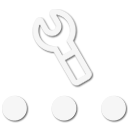@jimmyjamson
I think your question, and thus Jimmy's answer, are confusing because imprecise use of terms.
"Auxiliary battery"... is that a 2nd battery in parallel with start battery? Or is that a house battery system that is isolated for camping loads? Etc.
Here is what is actually recommended, many many videos and in fact at the Overland Expo West seminars this month:
1. Always run your winch off your Alternator + start battery system! Not a 2nd house system.
2. When winching, always run the alternator to help supply the big amp draw from start battery system.
3. If you want to increase the capacity of your start battery (+ alternator) system, you can add another battery to it in parallel; or you can change starter battery to a larger battery. Both have the same effect.
4. Any additional battery system, often called a House Battery, a 2nd Battery system, a Camper battery, should NOT BE USED for winching. These systems are usually separated from alternator system via an isolator, or nowadays via a dc to dc charger--this allows 20-40A charging but keeps that 2nd system from draining start system with engine off.
Anyways, just wanted to help clarify so you are setting up the correct "Auxiliary battery " type, one parallel and hard wired to start battery.







